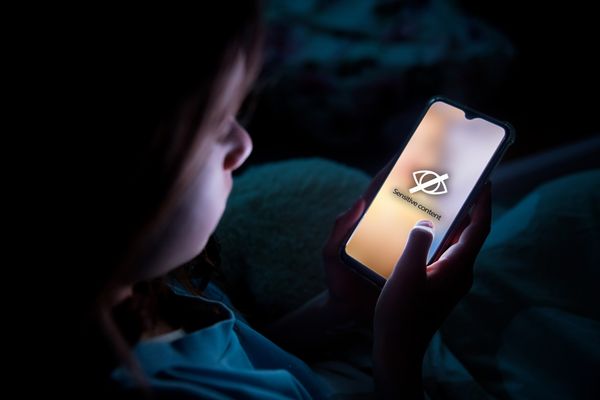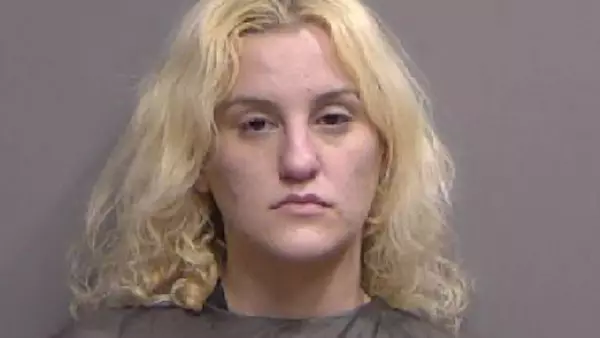
The members of Girls Aloud are set to take part in a 5km Race for Life event this weekend in memory of their late bandmate, Sarah Harding.
Harding died in September 2021, aged 39, a year after she was diagnosed with breast cancer.
The run will take place in Hyde Park in London on Sunday (24 July) at 11AM.
The singer, model and actor rose to fame during her time in Girls Aloud alongside Cheryl, Nadine Coyle, Kimberly Walsh and Nicola Roberts.
In a statement announcing the run in June, the band members invited “those who loved and respected Sarah to come together with the rest of the band and celebrate her life”.
Harding revealed she had been diagnosed with breast cancer and it had spread to other parts of the body in August 2020.
In her book Hear Me Out, Harding wrote that she had felt pain around her breast but ignored it because she was in “denial”.
“At first I thought it was just a cyst. I’d been playing my guitar a lot, and I thought the strap had probably irritated an area around my breast.
“The trouble was, the pain was getting worse. It got so bad that I couldn’t sleep in a bed any more. I slept on the sofa, popping painkillers like they were Smarties.
“I really overdid it, but the pain was overwhelming. Eventually, my skin started to bruise, and by now I was terrified.”
Harding said she realised that she had been “in denial” and that something was “very wrong”.
Breast cancer is the most common type of cancer in the UK, with around one in eight women being diagnosed with the disease during their lifetime.
According to the latest statistics from Cancer Research UK, breast cancer accounted for 15 per cent of all new cancer cases in 2017.
Despite this, a large number of women don’t check their breasts regularly for changes.
One study by Bupa and HCA Healthcare UK revealed that one in four women admit they have never examined their breasts or can’t remember the last time they did.
Joanna Franks, consultant breast and oncoplastic surgeon at HCA Healthcare UK, said: “Early diagnosis for breast cancer is so important, as it can prevent patients needing to undergo complex surgery and drug treatments.
“90 per cent of women diagnosed at an early stage will be alive and well five years post diagnosis however, this drops to just 15 per cent for those diagnosed at a later stage.”
For this reason, it’s vital that women do self-exams but just how do you do it, and what should you be looking for? Here’s everything you need to know.
What should my breasts feel like?
Before you start thinking about signs and symptoms of breast cancer, it’s important to get to know your own breasts and how they usually look and feel. That way, you can spot any changes and report them to your GP quickly.
Every woman’s breasts are different in size, shape and consistency, and the NHS states that it’s normal for one breast to be larger than the other.
It also says you might find your breasts feel different at different times of the month due to your menstrual cycle. Similarly, after menopause, some women’s breasts can feel softer and less firm.
How do I examine my breasts?
When it comes to checking your breasts for anything unusual, the NHS says it can be helpful to stand in front of a mirror.
First, it suggests examining your breasts for any visual changes and to look with your arms by your side and also with them raised.
Then, you should continue by feeling each breast, checking everywhere there’s breast tissue, including underneath your armpit and all the way up to your collarbone.
What should I be looking for?
Aside from finding a noticeable lump, breast cancer can have a number of different symptoms.
The NHS suggests seeing your GP if you notice any of the following changes:
- a change in the size, outline or shape of your breast
- a change in the look or feel of your skin, such as puckering or dimpling
- a new lump, thickening or bumpy area in one breast or armpit that is different from the same area on the other side
- nipple discharge that's not milky
- bleeding from your nipple
- a moist, red area on your nipple that doesn't heal easily
- any change in nipple position, such as your nipple being pulled in or pointing differently
- a rash on or around your nipple
- any discomfort or pain in one breast, particularly if it's a new pain and doesn't go away (although pain is only a symptom of breast cancer in rare cases)
When and how often should I check my breasts?
You can check your breasts any time of the day, and anywhere, whether that’s sitting on the sofa or when you’re getting dressed.
However, some people do find it easier to notice changes in the shower or bath, by running a soapy hand over each breast and under each armpit.
While there is no specific number of times you should be checking your breasts, breast cancer charity CoppaFeel! suggests doing so at least once a month.
This way, you will build confidence of knowing what is normal for you and will notice any unusual changes quickly.
Is it normal to have breast lumps?
According to the NHS, lots of women have breast lumps and nine out of 10 are not cancerous.
However, if you find changes in your breast that aren’t normal for you it’s best to see your GP as soon as possible.
What is a mammogram and when should I have one?
A mammogram is an X-ray of your breasts, which typically takes place in a breast screening unit.
Mammograms can help detect small areas of calcium in the breast tissue, called calcification.
Calcification can develop because of non-cancerous changes in the breast, however, it can also be an early sign of cancer. Experienced technicians and doctors will be able to determine whether or not the calcification found is benign or requires further tests.
Currently, mammograms are offered to women who are 50 to 70-years-old every three years. However, the NHS is in the process of extending the programme as a trial, offering screening to some women aged 47 to 73.
For more information on breast cancer, you can visit the NHS, Cancer Research UK, Breast Cancer Now and CoppaFeel!







